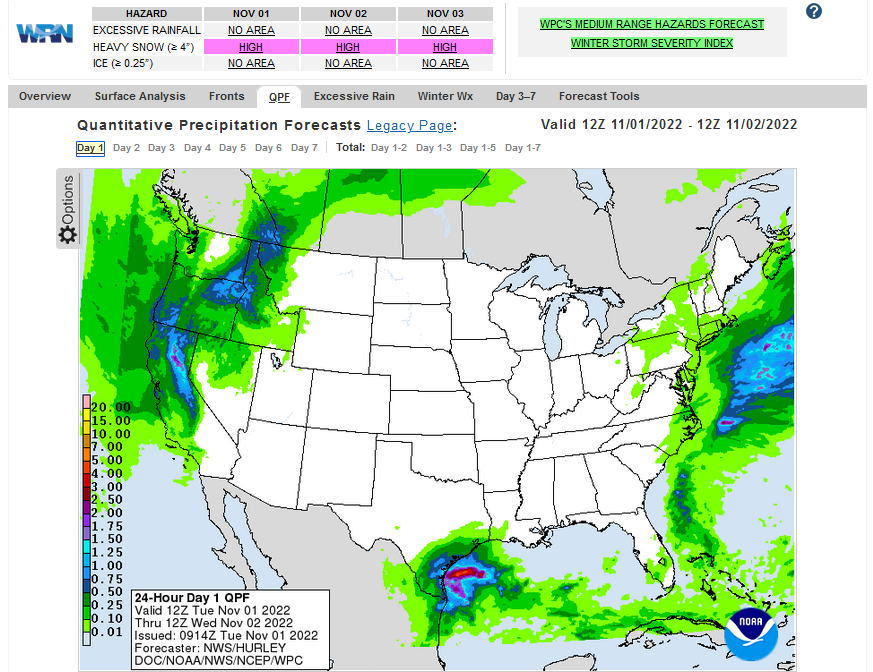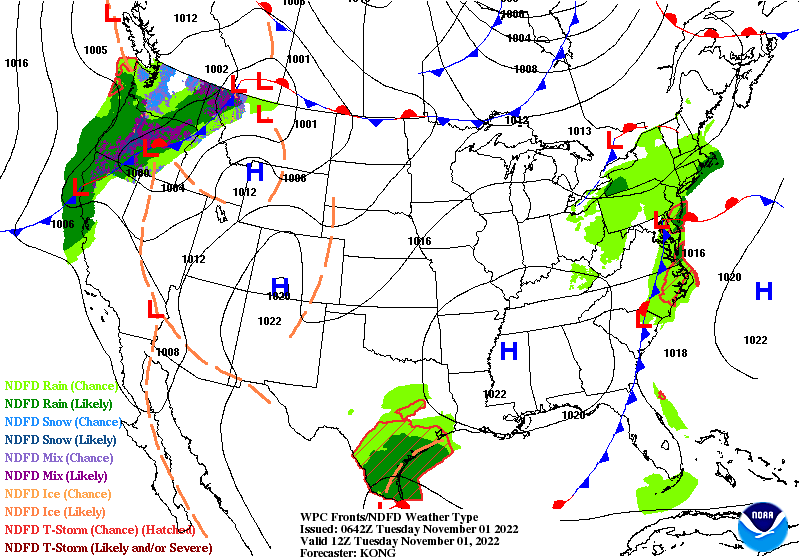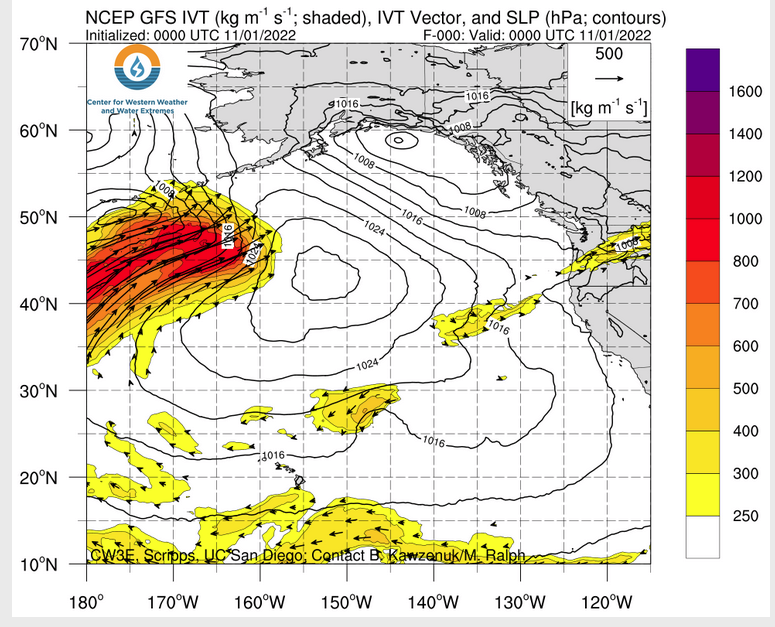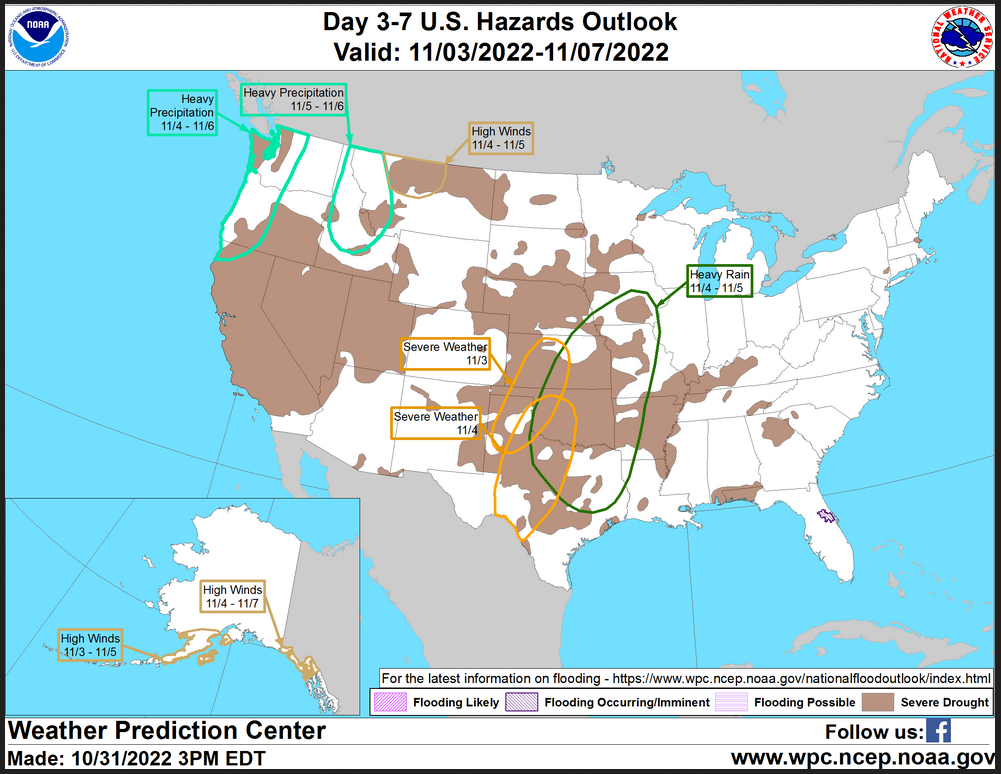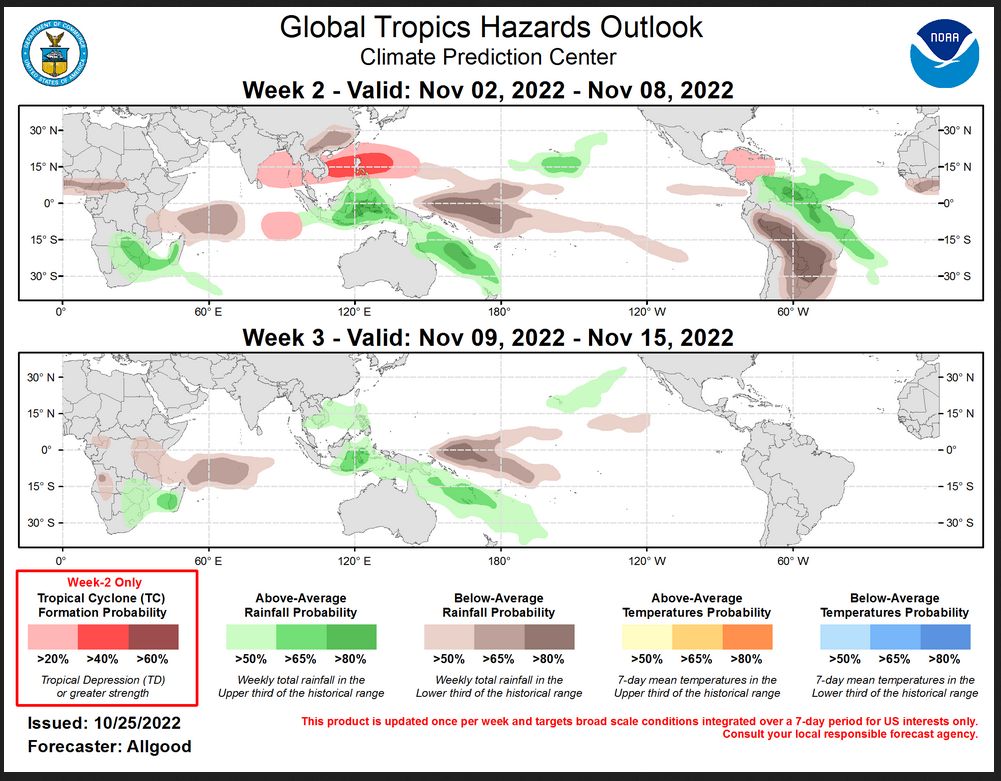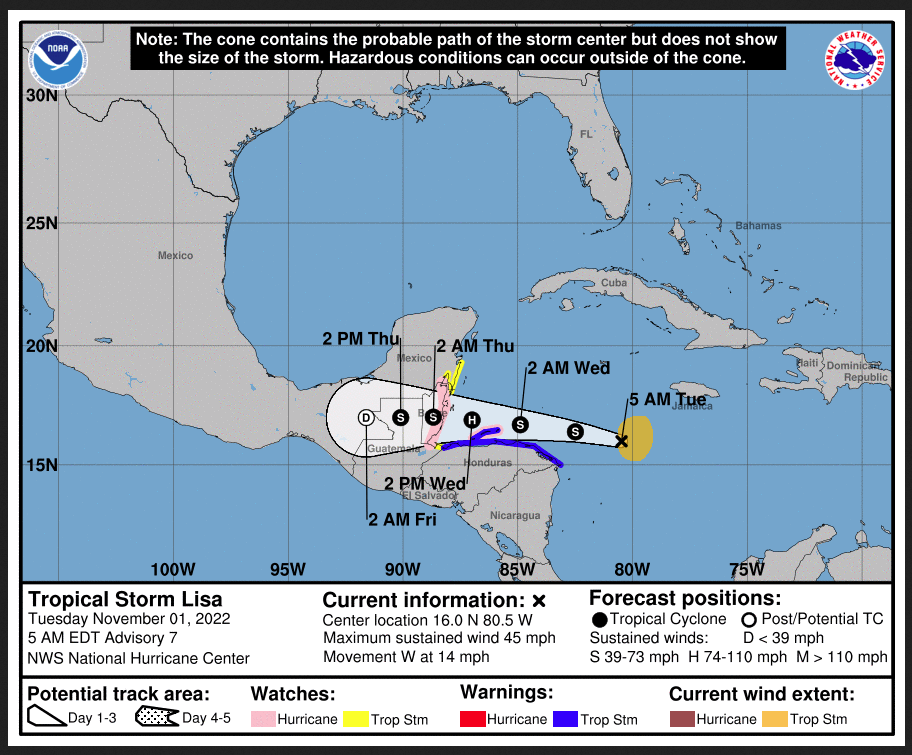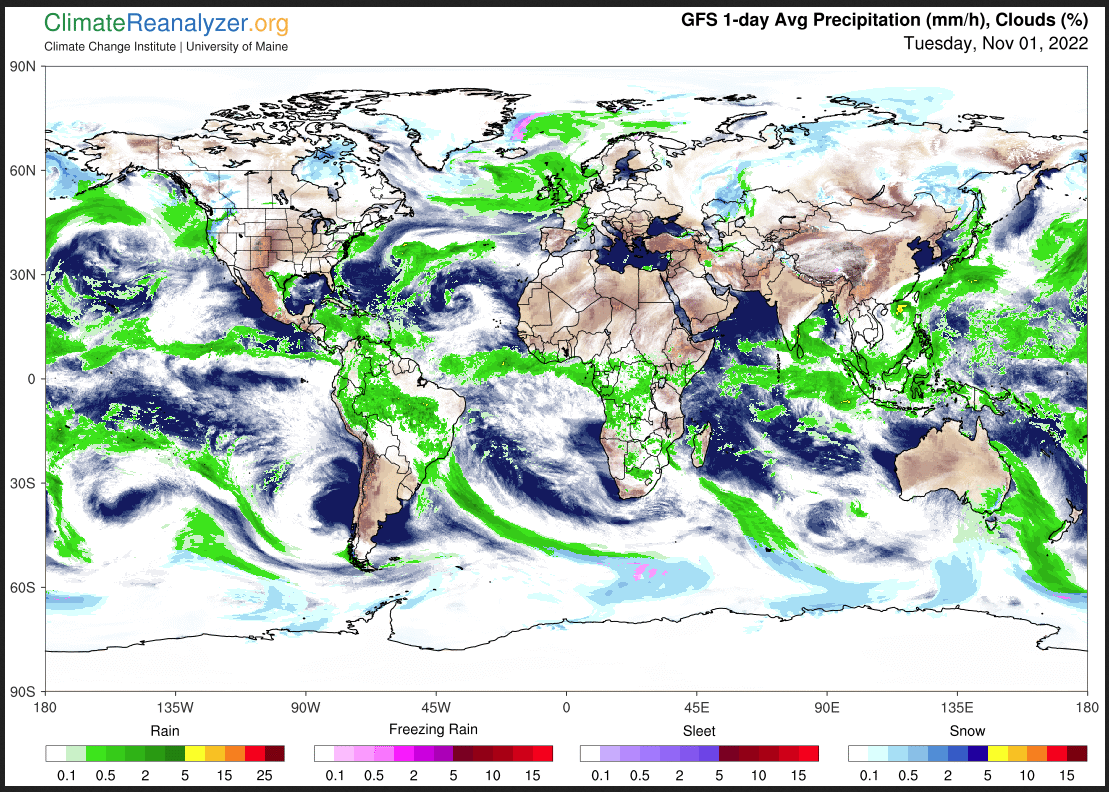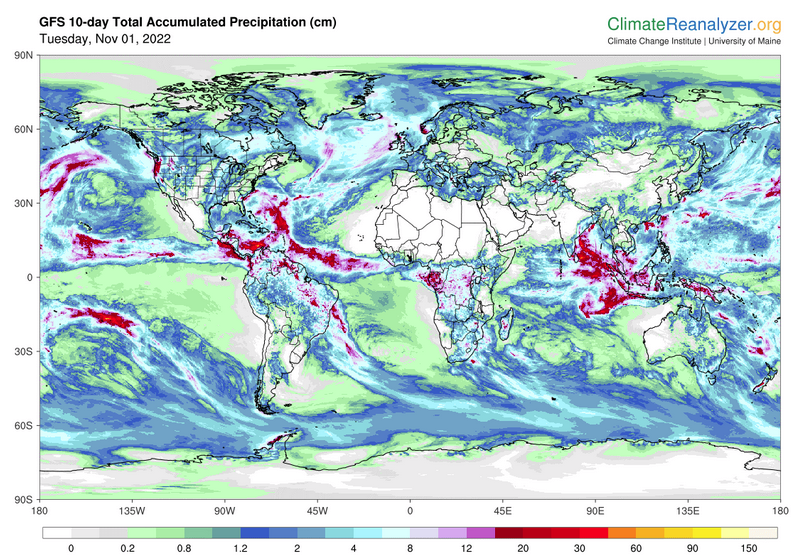Here is what we are paying attention to this evening and the next 48 hours from this morning’s (Tuesday) NWS Forecast.
...Much needed precipitation to spread southward through California Monday night into Wednesday... ...Heavy mountain snows expected across portions of the northern Rockies, Oregon Cascades and northern to central Sierra followed by the central Rockies... ...A big cool down for areas west of the Rockies, while much above average temperatures persist to the east of the Rockies all the way to the East Coast... ...Fire weather threats increase Tuesday into Wednesday across the northern and central High Plains...
Continuation of the NWS Short Range Forecast (It is updated twice a day and these updates can be found here.
The mid to upper level flow across the U.S. mainland will become increasingly amplified early this week as a strong upper trough forms along the West Coast on Tuesday and pushes inland on Wednesday. The associated cold front that has been pushing into the Pacific Northwest early today will continue to push southeast, bringing some much needed rains to portions of California beginning tonight. The heaviest precipitation is expected from northern California into the Sierra, with lighter totals expected across Southern California. While much needed, this precipitation will not make much of a dent in the extreme to exceptional drought that continues to plague much of California. Across the higher elevation, heavy snow is expected to develop from west to east through the Cascades of Oregon and southward into the northern and central Sierra of California today, followed by portions of the northern Rockies from northwest Montana, northern Idaho and northeast Oregon on Wednesday. By Wednesday night/early Thursday, central Rockies will begin to see the low elevation rain and mountain snow coming in. In addition to the mountain snows, the potent trough will bring a big cool down to temperatures across the West with below average temperatures expected Tuesday from the Pacific Northwest into California, pushing inland through the Great Basin and northern Rockies on Wednesday. In contrast, warmer than average temperatures will persist across the eastern two-thirds of the country for the next couple of days ahead of upper trough in the West. In fact, high temperatures are forecast to be up into the 70s to around 80 degrees through the Plains for the next couple of days, even some record high temperatures are forecast at certain locations in the northern Plains to the upper Midwest. Increasingly gusty and dry winds from the south are forecast to develop across large sections of the northern/central High Plains late Tuesday into early Wednesday ahead of a developing low pressure system over the northern High Plains. This will support an elevated fire weather risk from eastern Colorado, southeast Wyoming, western Nebraska and into southwest South Dakota. Along the East Coast, scattered rain associated with a couple of weak low pressure systems will largely move off the coast later today. Across southern Texas, a separate low pressure system near the tail end of a front will bring scattered showers and thunderstorms up into the Rio Grande Valley into tonight. By Wednesday, precipitation chances are forecast to diminish as the rain is forecast to move offshore.
Current forecast of heavy precipitation (Updates can be found HERE)
Maps that relate the forecast to geography can be found by clicking Here for Day 1 and Here for Day 2.
Here is a 60-hour animated forecast map that shows how the short-term forecast is expected to play out
If it needs to be updated click here.
ATMOSPHERIC RIVERS
Click HERE to update. Here is some useful information about Atmospheric Rivers.
HAZARDS OUTLOOKS
Click here for the latest complete Day 3 -7 Hazards forecast which updates only on weekdays. Once a week probably Monday or Tuesday I will update the images. I provided the link for readers to get daily updates on weekdays. Use your own judgment to decide if you need to update these images.
Worldwide Tropical Forecast
(This graphic updates on Tuesdays) If it has not been updated, you can get the update by clicking here This is a new approach and covers weeks 2 and 3 not weeks 1 and 2. It has more information but I am having trouble getting used to it. As usual, it comes with a discussion which is below
Detailed Maps and Reports for the Western Atlantic and the Pacific Oceans
Below are four maps that summarize the situation for the Atlantic, Eastern, Central Pacific, and Western Pacific. Additional information can be accessed by clicking HERE
First the Atlantic
Click to view the forecast map and have access to additional information https://www.nhc .noaa.gov/gtwo.php?basin= atlc&fdays=5
Then Eastern Pacific
Click to view the forecast map and have access to additional information https://www.nhc.noaa.gov/gtwo.php?basin=epac&fdays=5
Then Central Pacific
Click to view the forecast map and have access to additional information https://www.nhc.noaa.gov/gtwo.php?basin=cpac&fdays=5
And the Western Pacific
Click to view the forecast map and have access to additional information https://www.metoc.navy.mil/jtwc/jtwc.html
Some Intermediate-Term Outlooks
Links to “Outlook” maps and discussions for three time periods. Days 6 – 10, Days 8 – 14, and Weeks 3 and 4. An outlook differs from a forecast based on how NOAA uses these terms in that an “outlook” presents information from deviation from normal and the likelihood of these deviations.
You have to click on the links because they do not update automatically and I do not want to have stale images in the article. But it is not difficult to click on a link and you get a large image plus a discussion. On Fridays in a separate article, we will show the images and provide a link in this article that article. But remember what you will see is the images as of Friday. But here you can get the current images simply by clicking on them. Then hit the return arrow at the upper left of your screen to return to the article. You will not find this information easily anywhere else.
Right now you can find these maps here (We show them every Friday there but you can click above and find them).
Worldwide Weather
Below is the current or short-term precipitation forecast which can be updated by clicking HERE Additional maps can be obtained H ERE.
Month to Date Information
Month to date Temperature can be found at https://hprcc.unl.edu/products/maps/acis/MonthTDeptUS.png
Month to date Precipitation can be found at https://hprcc.unl.edu/products/maps/acis/MonthPNormUS.png

